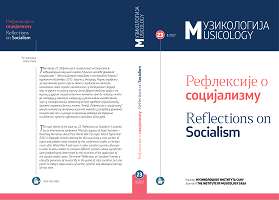The Early Prague Spring: Analysing the Re-Establishment of Modernist Aspects According to the Example of Three Piano Concertos by the “Prague Group” of Composers
The Early Prague Spring: Analysing the Re-Establishment of Modernist Aspects According to the Example of Three Piano Concertos by the “Prague Group” of Composers
Author(s): Marija Golubović, Nikola KomatovićSubject(s): Cultural history, Music, Social history, Sociology of Art, History of Art
Published by: Muzikološki institut SANU
Keywords: Prague group; piano concerto; socialist realism; modernism;
Summary/Abstract: The interwar period brought about a number of modernist tendencies in the heterogeneous cultural context of the Kingdom of Yugoslavia, which is particularly salient in the works of the young composers belonging to the so-called “Prague group.” Having completed their studies, dozens of composers and conductors, including Ljubica Marić (1909–2003), Stanojlo Rajičić (1910–2000) and Milan Ristić (1908–1982) contributed to the establishment of the new movement in the conservative milieu of interwar Belgrade. Afer World War II, socialist realism became, in efect, the only approved style for the artists of the period. However, only a decade afer the Tito–Stalin split, modernist tendencies reappeared fullblown in the output of Yugoslav composers. It is therefore of the greatest interest to analyse and present the way in which modernist music managed to fnd its way back to Yugoslav composers, performers and audiences in such a short period of time (the 1950s). To do so, we have chosen three piano concertos, writen at the very beginning, in the middle, and at the very end of this period. Tis overview would not have been possible if we had analysed works belonging to other genres, as most had already been established in the pre-war period. However, it is also safe to conclude that the limitations on the Yugoslav scene were not imposed only by political authorities, but also by the conservative tastes of its audience and society, which were already in place before WWII.
Journal: Muzikologija
- Issue Year: 2/2017
- Issue No: 23
- Page Range: 127-141
- Page Count: 15
- Language: English

